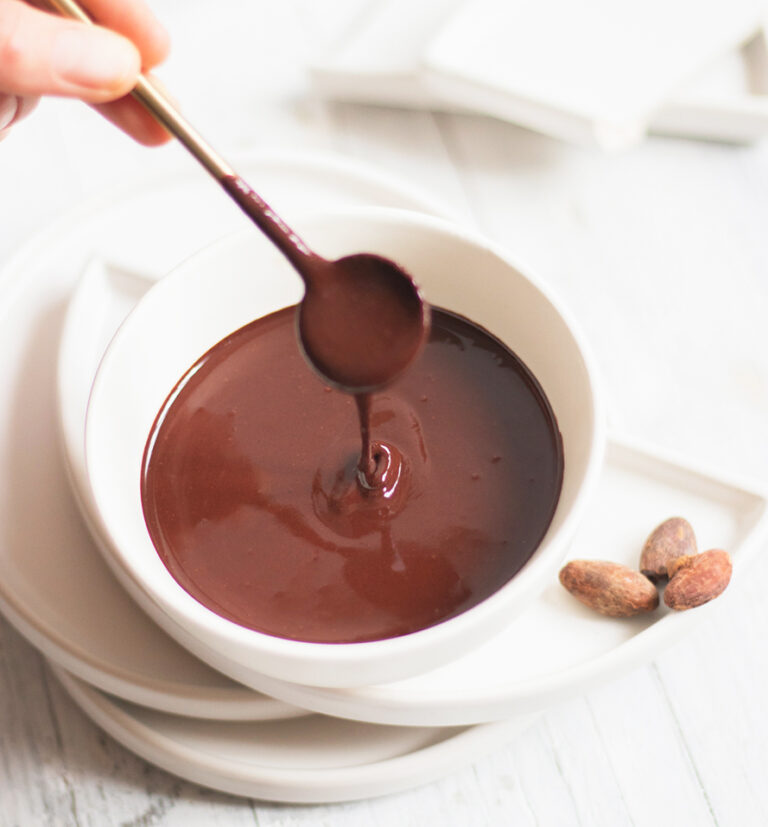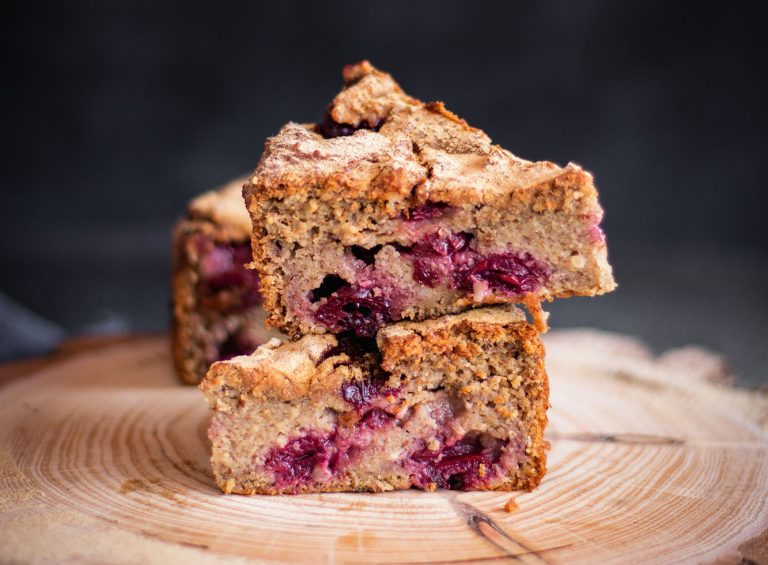The Secrets to Perfect Quince Jam
Quince season is here, and it’s the perfect time to make this delicious and easy homemade quince jam. This recipe includes a sugar-free option for those who prefer a healthier treat.

Homemade quince jam is one of the best ways to preserve these beautiful, fragrant autumn fruits. In this post, I’ll share my favourite recipe for quince jam that doesn’t leave anyone indifferent. This quince jam is seriously so good, it’s something you can’t buy in a store.

Quince jam ingredients
For this easy quince jam recipe, you’ll need the following ingredients:
- Quinces
- Raw cane sugar, or xylitol for the sugar-free option
- Water
When choosing the best quinces for your jam, pick the ripe, yellow and fragrant ones.
If you have a quince tree and many under-ripe, green ones that fell on the ground, they’ll work too, as long as they smell nice. This year, I had a mix of ripe and under-ripe ones from my friend’s orchard, and I used them all with great results.
My favourite sweetener for this quince jam recipe is raw cane sugar. Light muscovado and jaggery are some other great options. Honey works too, but I rarely use it for jams because I think it’s a pity to cook it for so long.
For a sugar-free version of the jam, I recommend xylitol – a natural alcohol derived from birch. It comes in the form of crystals, just like sugar, and has a sweet taste but is very low in calories. Its glycemic index is also really low.
Many people add lemon juice to jam recipes. I usually don’t, but you can if you want. It works with this recipe, you can add it at any point when cooking. Lemon juice is often used in jams to help the natural pectin molecules from fruits form a net and set the jam.
In my experience with quince jam, it sets even without lemon. Quinces are naturally full of pectin and are naturally a bit acidic too, so I suppose that’s the winning combination.

How to make quince jam
To make quince jam, all you have to do is cut the quinces, cook them in some water, add sugar and keep cooking for a few hours until you get a delicious jam. It only takes some time to cook perfectly, but it’s incredibly easy and the result is amazing.

So, you’ll start by washing the quinces and cutting them into very small cubes, about a quarter of an inch long. That way, you won’t need to blend the jam later – the chunks will get perfectly soft and mushy, and your jam won’t be monotonous.

Put the chopped quinces into a pot and add enough water to get just a little bit below the quinces level. Bring it to a boil in a covered pot and let it simmer for ten to fifteen minutes until the quince cubes get tender.

Add sugar and let it simmer over the lowest heat for a couple of hours. Within the first hour or so, you can stir a few times but it’s okay if you don’t keep a close eye on the pot. After the first hour, the liquid will reduce and you’ll need to stir more often to prevent splattering or burning the bottom of the pot.
The whole cooking process may take between two and three hours, depending on the heat and the pot type. Make sure you keep a closer eye on your jam after the first hour of cooking, or when you see it starts looking thicker.

The jam is done when the liquid no longer separates from the fruits and it looks kind of jelly-like. It will thicken after it cools down, so no need to cook it for too long and make it extra dense (unless that’s what you like).
Canning and storing the quince jam
When the jam is cooked, use a ladle to transfer it into sterilised glass jars while it’s still hot. Seal the jars and keep them in a cool, dry place.

Read this post to learn a few ways of sterilising jars at home for canning and storing preserves for a long time.
Properly canned quince jam can last for many months in a pantry or other cool and dry place.
Once opened, your quince jam should be kept in a fridge and used within 5 days or so to prevent it from catching mould. Maybe it can stay open and mould-free for longer, you can check its surface and if it looks clean and smells nice, it’s good to eat.

Quince jam recipe equipment
To make this easy and delicious homemade quince jam, you will need the following equipment:
- A good knife – quinces are hard and you’ll need a large knife and some strength
- Cutting board
- A large pot with a lid for cooking the jam
- Wooden cooking spoon
- Glass jars for canning

Quince jam serving ideas
- Have a spoonful of your amazing homemade quince jam in this autumn breakfast bowl.
- Have it on a slice of homemade bread: spelt sourdough, oat soda bread, or corn and pumpkin bread – all go really well with this quince jam.
- Combine it with homemade hazelnut butter for the ultimate autumn treat.

Quince Jam

Use this quince season to make a delicious and easy homemade quince jam. This recipe also includes a sugar-free option for those who prefer a healthier treat.
Ingredients
- 1,5 kg quinces without seeds (about 1,8 kg whole quinces)
- 1,3 l water
- 500 g raw cane sugar or xylitol
Instructions
- Cut the quinces into small cubes, about a quarter to a third of an inch long.
- Put the quince cubes into a pot and add enough water to almost cover their surface.
- Cover the pot and bring to a boil over medium heat.
- Lower the heat and let it simmer in a closed pot for 10 - 15 minutes, until the quinces become tender.
- Add raw cane sugar or xylitol and let it simmer in an open pot over the lowest heat.
- Stir occasionally, especially when it starts to lose liquid. As the jam thickens, stir more often to avoid burning and splattering.
- Cook until the quinces start to get mushy, and the jam gets a nice texture (thicker but still spreadable, somewhat translucent and jelly-like). Depending on the heat and the pot size, this can take a couple of hours. Mine took three hours to get to the perfect jam consistency.
- The quinces will most likely turn beautiful bright red. Don’t overcook the jam, keep in mind that it will thicken as it cools down - quinces are full of natural pectin. It can be a bit runny at this stage.
- Transfer the hot jam into glass jars. Use a ladle and you can transfer it straight away, it will cool down a bit while you transfer it so it won’t shock the jars too much.
- Put the lids on and seal the jars straight away, while the jam is still hot, to keep it all sterile and good for preserving.
- After the sealed jars have cooled down, you can keep them in a cool, dry, dark place. After opening, keep the quince jam jar in the fridge and try to eat it within five days or so.
Notes
* There is no sure way to tell if the jam is done or not, it’s mostly a matter of personal preference. Some people like it lighter, more liquid and more light amber in colour rather than bright red. In that case, you can cook it shorter. I still recommend cooking it until the liquid no longer separates from the fruits and it looks like a jam you’d spread on a slice of bread, just a bit more runny (it will thicken a bit when it cools down).
* Check out my post about sterilising jars for jams and preserves if you’re not sure how to prepare your jars for canning. If you do these steps well, your jam will last very long in the pantry without catching mould.
* If you don’t want to shock the jars when transferring the hot jam, you can heat them up in the oven at 70 °C (160 °F) for 20 minutes prior. This step is optional - in my experience, they’ll survive anyhow. But, often the jars will already be hot from sterilising so it’s a win-win.
* pouring the hot jam into the jars and sealing the jars straight away will help keep a sterile environment for preserving the jam.
* After opening a jar of your quince jam, it has to be kept in the fridge and spent as soon as possible. It’s hard to say exact time, it can be anything between five and ten days, but sometimes it lasts even longer. Just check if it has any mould - if not, and it looks normal, it’s good for eating.







